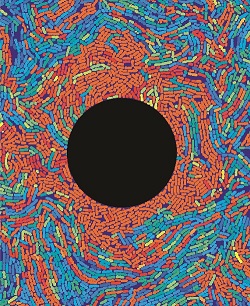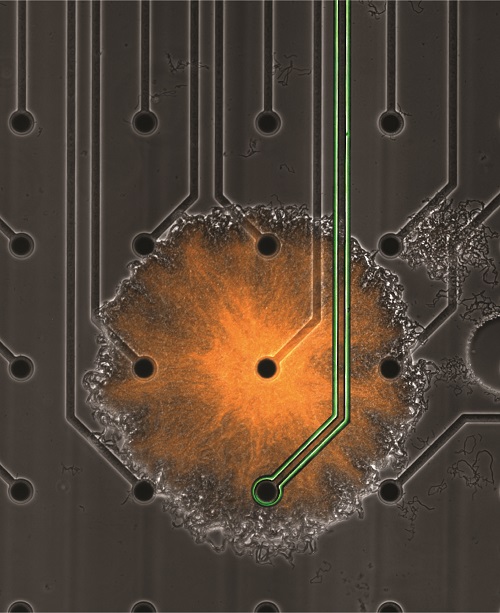Researchers Manipulate Demographic of Bacterial Community with Novel Electronic Technology
Scientists find that electrical shocks can change the types of cells in bacterial communities, offering a new approach to precisely control bacteria
Clusters of microscopic bacteria exist all around us. These invisible communities, known as biofilms, are found in habitats ranging from our skin surface to sewer pipes and play integral roles in environments spanning healthcare to agriculture.

An interdisciplinary team of scientists from UPF and the University of California San Diego have joined forces to develop a novel method of using electrical shocks to control the development of communities of bacteria. Their findings, obtained with a newly developed technology, are significant from a medical perspective. In areas where bacteria growth is a concern, biofilms can lead to chronic infections, especially in locations such as hospitals where antibiotic resistance is a major health threat.
The scientists have developed a novel microfluidic device and combined it with a multi-electrode array, which allowed them to apply localized electric shocks to a growing biofilm.
As described in a paper published in Cell Systems, a team at UC San Diego led by Professor Gürol Süel together with Jordi Garcia-Ojalvo, full professor at UPF, have developed a novel microfluidic device and combined it with a multi-electrode array, which allowed them to apply localized electric shocks to a growing biofilm. To the researchers’ surprise, electrical stimulation caused motile cells to multiply, even though all cells in the biofilm are genetically identical.
 “While it is known that electrical shocks can kill cells, here we show that they can cause growth of a specific sub-type of cells,” said Süel, a Biological Sciences professor. “How a second-long stimulation can promote growth for hours and only of one type of cells is a great puzzle that we are eager to solve.”
“While it is known that electrical shocks can kill cells, here we show that they can cause growth of a specific sub-type of cells,” said Süel, a Biological Sciences professor. “How a second-long stimulation can promote growth for hours and only of one type of cells is a great puzzle that we are eager to solve.”
One of the key points of these effect is the role of ions in cell function. "The regulation of the bacteria's behaviour by controlling their ionic composition is still poorly understood”, states Jordi Garcia-Ojalvo.
“Being able to modulate cell types in this way is not just important for understanding biofilms,” said Colin Comerci, first author of the paper. “The electrochemical signals we used are similar to signals used during development in more complicated organisms like frogs, fish or even humans. Thus, our findings may offer analogies to other biological systems.”
Why electrical stimulation boosts the population of one cell type rather than another remains a mystery and continues to be studied. Such influence, the researchers say, provides control of the biofilm’s composition and development, and may offer a new tool to destabilize biofilms in healthcare and agriculture settings.
Reference article
Comerci et al. Localized electrical stimulation triggers cell-type-specific proliferation in biofilms. Cell systems, May 2022. DOI: 10.1016/j.cels.2022.04.001.
